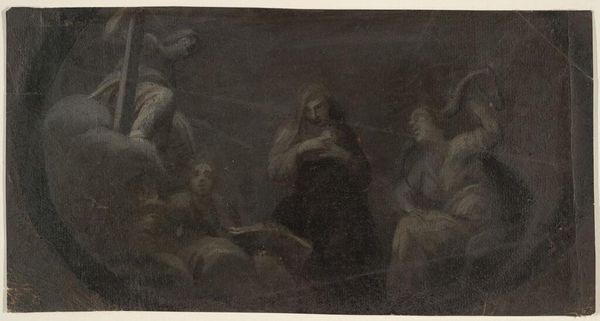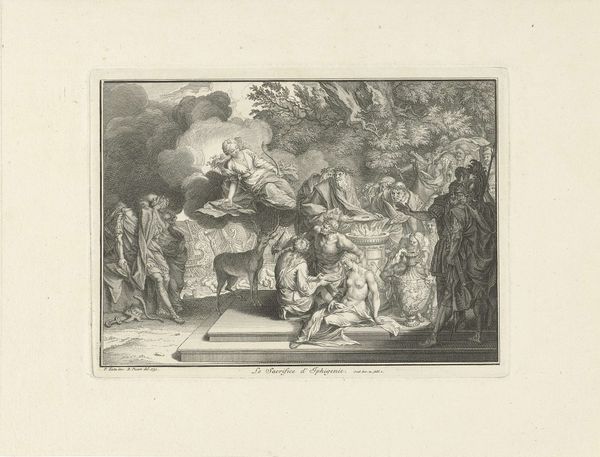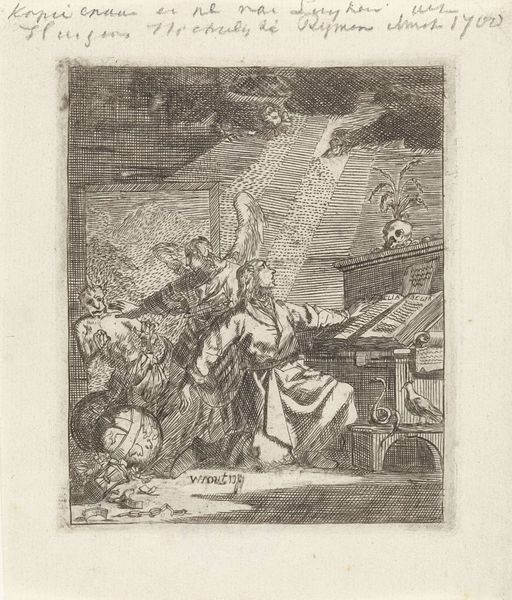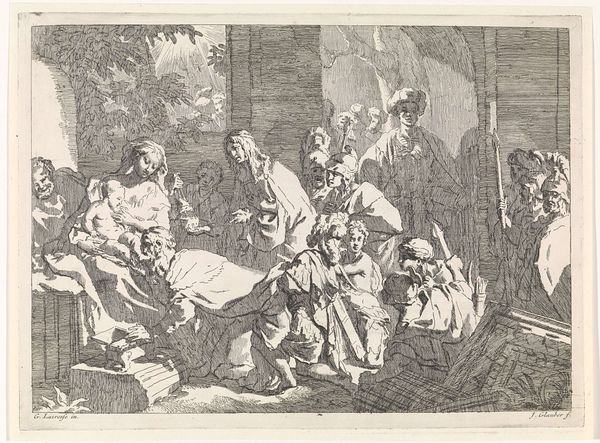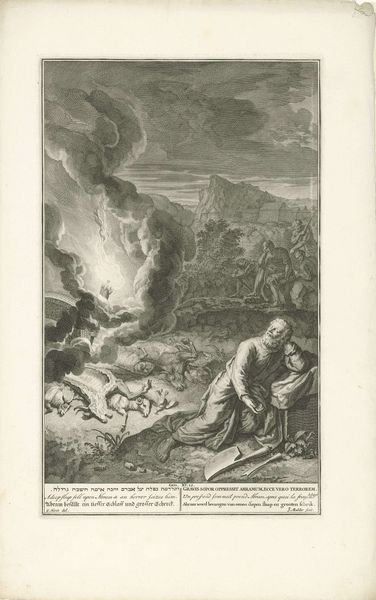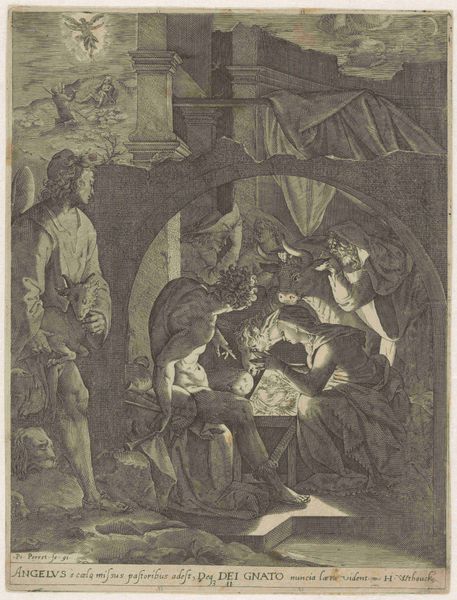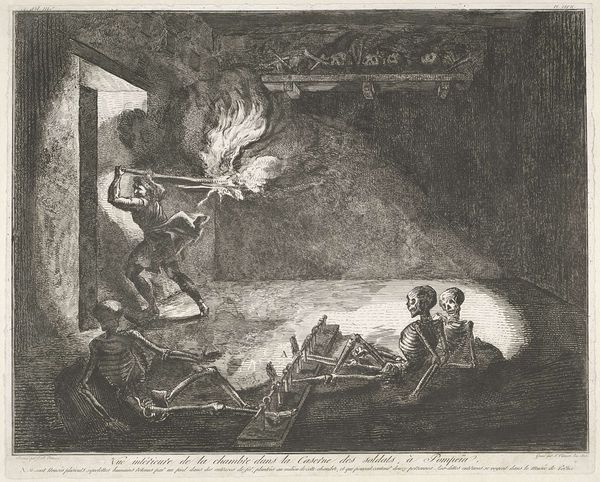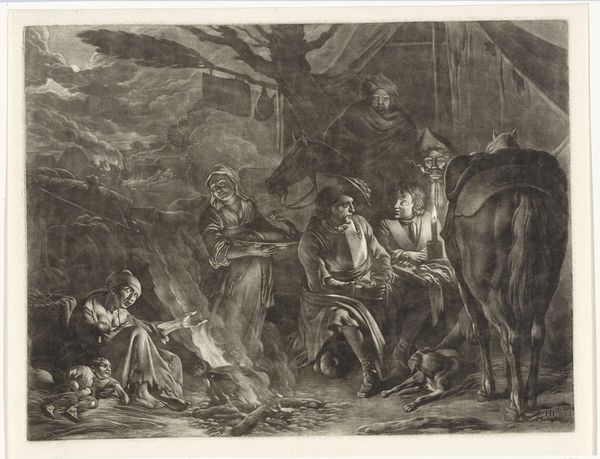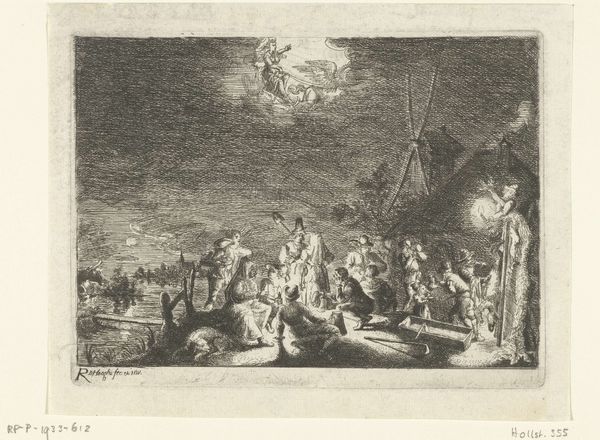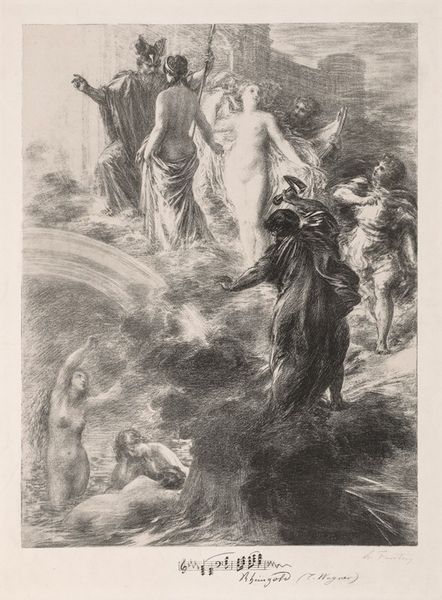
drawing, pencil, charcoal
#
pencil drawn
#
drawing
#
pencil sketch
#
dog
#
landscape
#
charcoal drawing
#
pencil drawing
#
pencil
#
horse
#
genre-painting
#
charcoal
#
history-painting
Dimensions: height 225 mm, width 300 mm
Copyright: Rijks Museum: Open Domain
Editor: This drawing, "Soldiers at Mealtime," is by an anonymous artist and dates from 1657 to 1733. It's rendered in pencil and charcoal. I'm struck by the contrast between the seeming domesticity around the fire and the implied military presence. What do you see in this piece? Curator: I see a carefully constructed tableau that speaks volumes about power, gender, and class in the context of 17th-century warfare. The soldiers' relative comfort, their access to food and drink, is juxtaposed with the figures around the campfire, likely local inhabitants made vulnerable by war. Who gets to rest and eat, and who is forced to beg? It's about the stark inequalities inherent in military occupation. Editor: That’s a strong reading. I hadn't considered the power dynamics so explicitly. Do you think the artist was making a deliberate comment on the ethics of war? Curator: I think it's hard to say definitively what the artist intended. But by placing these figures together, the artist invites us to consider the human cost of conflict beyond the battlefield. It brings forth the narratives of marginalized communities often overlooked in grand narratives of military history. Consider, too, the prominence of the women and children by the fire. Editor: Right. They're literally in the foreground, demanding our attention. So the piece critiques not just war, but perhaps the patriarchal structures that perpetuate it? Curator: Precisely. War disproportionately affects women and children, rendering them more vulnerable to exploitation and displacement. This image can be interpreted as a subtle indictment of those structures. And notice the single dog in the drawing: How is that a statement on the chaos? Editor: I hadn't even considered it like that. I was just drawn to the people and assumed that the animal was just present. But framing it as a social critique reveals hidden meanings that speak to our current anxieties. Curator: It shows the continuing relevancy of this historic artwork.
Comments
No comments
Be the first to comment and join the conversation on the ultimate creative platform.
